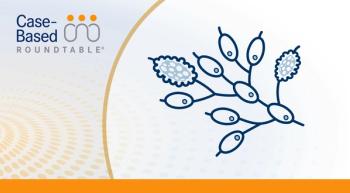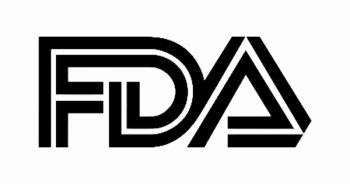
Hochhaus on ASC4START and Asciminib’s Superior Tolerability in CML-CP
Key Takeaways
- Asciminib demonstrated a 55% lower risk of treatment discontinuation due to adverse events compared to nilotinib in the ASC4START trial.
- Preliminary efficacy results showed asciminib led to deeper molecular responses than nilotinib at week 12.
Asciminib shows significant safety and efficacy advantages over nilotinib in treating newly diagnosed chronic myeloid leukemia, promising a new standard of care.
At the 2025 American Society of Clinical Oncology (ASCO) Annual Meeting and European Hematology Association Congress, compelling data from the
According to Andreas Hochhaus, MD, head of Hematology and Medical Oncology at Jena University Hospital in Germany, “There is a very clear difference between asciminib and nilotinib in favor of asciminib, because only 16 patients discontinued in the asciminib arm, and the other 34 in the nilotinib arm—a statistically significant difference.”
Clear Superiority in Tolerability
At the data cutoff of September 3, 2024, a 55% lower risk of treatment discontinuation due to adverse effects (AEs) was observed in the asciminib arm compared with nilotinib. The cause-specific hazard ratio was 0.45 (95% CI, 0.25-0.81; P =.004). TTDAE occurred in 5.3% of patients treated with asciminib vs 11.7% with nilotinib.
“The end point of the study was planned for 65 events... but there was an interim analysis preplanned, which we now present,” Hochhaus said. “We have a clear result already in this interim analysis... Therefore, we are very sure that this will be maintained and confirmed in the final analysis.”
Common AEs leading to discontinuation with asciminib included thrombocytopenia (1.4%), increased lipase (0.7%), and pancreatitis (0.4%). In contrast, nilotinib was associated with higher rates of pancreatitis (1.4%), increased blood bilirubin (1.1%), and atrial fibrillation (0.7%).
Dose modifications due to AEs were also less frequent with asciminib (24.3% vs 30.1%), and the overall rate of grade ≥3 AEs was lower (25.0% vs 31.9%).
Early Efficacy Trends Also Favor Asciminib
While the ASC4START trial is primarily focused on safety, preliminary efficacy results are encouraging. At week 12, asciminib led to deeper molecular responses compared with nilotinib:
BCR:ABL1IS ≤10%: 89.8% (asciminib) vs 82.0% (nilotinib)
BCR:ABL1IS ≤1%: 69.0% vs 52.5%
Major molecular response (MMR): 22.9% vs 10.2%
MR4 and MR4.5: 4.6% and 2.5% vs 1.1% and 0.4%, respectively
The Path Forward: Long-Term Goals and Global Impact
The ASC4START trial enrolled 568 patients across 24 countries, with the majority of patients recruited in Germany and France. Patients were randomly assigned 1:1 to receive asciminib 80 mg once daily or nilotinib 300 mg twice daily, with stratification by EUTOS Long-Term Survival (ELTS) risk category.
Baseline characteristics were well balanced, and more patients were continuing treatment with asciminib than with nilotinib at 89.1% vs 82.0% at the time of interim analysis.
Beyond the 9-month median follow-up in ASC4START, asciminib’s safety has been tracked for over 6 years in prior studies. “We have huge datasets on long-term treatment with asciminib,” Hochhaus emphasized. “It’s not just short-term follow-up.”
However, Hochhaus also acknowledged future challenges, including mutation-driven resistance.
“We learned at [the American Society of Hematology Annual Meeting] that some patients get mutations... the disease tries to escape,” he said.3 He sees promise in combination therapies for patients with clonal evolution, stating: “That’s the next step. We plan such trials in Germany and Australia to define who needs more than just specific inhibition.”
Final Thoughts
The ASC4START trial reinforces the safety and emerging efficacy of asciminib as a potential frontline standard of care for newly diagnosed CML-CP.1 With a favorable safety profile, promising efficacy, and growing global regulatory support, asciminib stands poised to shift treatment paradigms in CML.
“We are now in a new situation,” Hochhaus concluded. “We now have a drug which is obviously better tolerated... and it’s very important to start with this drug in the first line.”









































